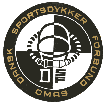Scuba diving
There are several archaeological investigation methods underwater, e.g. mini submarine,
ROV, and SSBA. But the most common method is scuba
diving, which is also a popular recreation sport. Scuba divers contribute a lot to the official underwater archaeology,
in various projects.
Recreational diving in Northern Europe is a cool thing, often ice cold, so a dry suit is necessary. In Sweden,
Norway, Denmark and Finland all
wrecks older than 100 years are legally protected – you may dive on them but not touch anything. In Finland you must
also notify the coast guard before a wreck dive. On the Finnish province island Åland, it is generally forbidden to
dive anywhere, except for a few places assigned by licensed dive centres. For scuba diving, both DIN (200 and 300
bar) and Yoke (200 bar) connectors are used.
Here is more scuba diving info for the Nordic region:
International scuba diving
- CMAS, (World Underwater Federation). Link.
- PADI International, United Kingdom. Running the project
Respect our Wrecks.
- NAUI
- British Sub-Aqua Club,
Alternative link
- Sub-Aqua Association, UK
- Verband Deutscher Sporttaucher (VDST),
Germany
- Irish Underwater Council (CFT)
- FFESSM, French Underwater Federation
- CPAS, Underwater Federation of Portugal
- Tauchsportverband Österreichs, Diving Federation of Austria
- Tauchen im Bodensee, info site, Germany
- Taucher.net, info site, Armin Süss, Germany
- Tauchführer, info site, Germany
- Tauchen in Deutschland, info site, Germany
- UK Diving, links & mailing lists, UK

- Divernet, diver magazine, UK
- Internet Duikclup, Netherlands
- Wreck.ru, Russia
- Association of Underwater Explorers, USA
- Scubaduba, USA, links
- Scubacentral & Rick's links, USA
- Harald Bolten's Diving Homepage, beautiful wreck photos

|




 |
Commercial & Archaeological diving
Unfortunately, the rules vary from country to
country: To participate in official Swedish underwater archaeology projects,
the “A Certificate” is needed, which is only issued by the Swedish Navy. This
certificate is not compatible with e.g. the British HSE. Norway requires the Norwegian “S
Certificate”.
But Denmark and Finland require no commercial qualification for volunteers to
participate in archaeology projects. Diving clubs and non-vocational groups are usually free to investigate, without
these certificates, as long as they follow the legislation of protected sites.
Thus diving clubs in e.g. Sweden are quite active participating in wreck
documentation projects, as long as they don't touch, excavate or recover objects.
SSBA (surface supplied breathing apparatus) means that the diver receives air from the surface, through a hose.
The diver wears a full face mask or a helmet, and has voice communication to the surface. The diver also carries a
backup system that can be switched to at anytime. SSBA is also called SAS (surface air supply) or Hookah (from a
1955 trade mark). SSBA requires special training. Popular systems include the
AGA / Interspiro and EXO / Kirby Morgan / DSI systems.
Diving medicine
|






 Back to Nordic Underwater Archaeology
Back to Nordic Underwater Archaeology